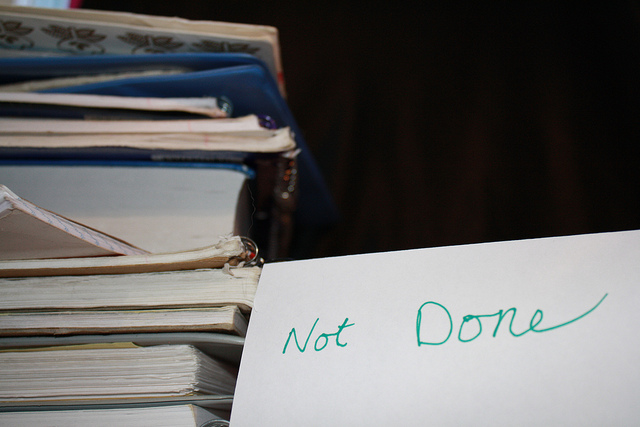Although many companies try to reduce procrastination, there could be a way around it to actually make it worth the company’s while. It is the case that many human resources teams make an attempt to increase productivity by reducing procrastination, which you can read more about on the Jason Hanold Blog, but this is not always the case. There are actually ways that organizations have found to structuring and using procrastination to their advantage. So in an attempt to take a look at the other side of procrastination here are some tips as to how your organization can turn the tables.
Run with it
Creating an environment where you can nurture productive procrastination is essential. When employees have run dry on ideas or are simply in need of a change of pace, it is more important to make sure employees have something to fall back on. By keeping a procrastination list you can ensure that time can be spent wisely, and when employees need to switch tasks they can still get work done.
Reading lists
In your team’s free time, there’s probably tons of reading material that could come in handy to promote professional development. As a break from a grueling project, might be interesting to get some reading done that can maybe get some creative juices flowing. A good way to set this up is to bookmark interesting articles and categorize them as you find them.
Take a break when needed
Sometimes it will come down to the just taking a break from everything. You may need to wind down and simply relax. Take a minute to drink coffee, take a walk, get a bite to eat and try to catch up on sleep. Tomorrow will be a new day and with a fresh start you will most likely get a lot more work done.
Get through your checklist
Some may think that procrastinating will only extend your to-do list, but that may not be true if you play your cards right. On one hand, if you tackle your to-do list when you’re in need of moving on from a task and get smaller tasks done in the meantime, you can actually become more productive. The other alternative is that sometimes you’ll leave a task on your to-do list and then it turns out that maybe that task was not really necessary. In this case you’ll save time simply by not doing an activity that wasn’t really necessary.
Taking your time
There are moments when leaders need to make difficult decisions, but can help themselves by stepping back and getting a fresh view of the situation. Taking time to focus on other topics and giving yourself time to digest the facts and making the best possible decision. By procrastinating you are actually giving yourself much needed space to make up your mind by evaluating the pros and cons of the situation.
Collaboration
Procrastination can even help you find ways to share ideas with co-workers and collaborate on new ideas. On those short breaks you need from the task at hand, you could have brainstorming sessions on new projects, use synchronous and asynchronous collaborative tools or simply a board to jot down ideas.

Courtesy of Tysh at flickr.com
Creativity
Having spaces to think creatively and step out of the day to day tasks is also important. Offering an office dynamic that allows employees to not be afraid to stop working on a task while they step back and recharge creative ideas will promote productivity.
Giving yourself time
When setting up a presentation, sometimes it can be beneficial to start it and get the frame of the presentation down. Then give yourself some time and start filling in the slides as you go along and when you get new ideas.
Schedule it
Procrastination must be planned for it to be productive. It will not be helpful to procrastinate when you don’t give yourself limits, a timeframe or smaller objectives. For this to be successful you’ll need to set up a time slot, that only when you need the break, you take the 5, 10 or 15 minutes allotted to fulfilling the tasks you’ve designated to your procrastinating space.
Working under pressure
Yes, although it is not ideal, there are some people that work better under pressure, so when as they get closer to the deadline, they actually produce their most innovative and creative work. Maybe giving yourself time to get closer to a deadline may give you just enough pressure to allow you to actually do a better job.
Procrastination could be a dangerous thing in an office, but if as an organization you set up a working environment that promotes productive procrastination then you’ll be more likely to take advantage of what so many other companies dread. And if you set it up correctly, it may actually boost your productivity levels and motivate employees to be more innovative and creative.

